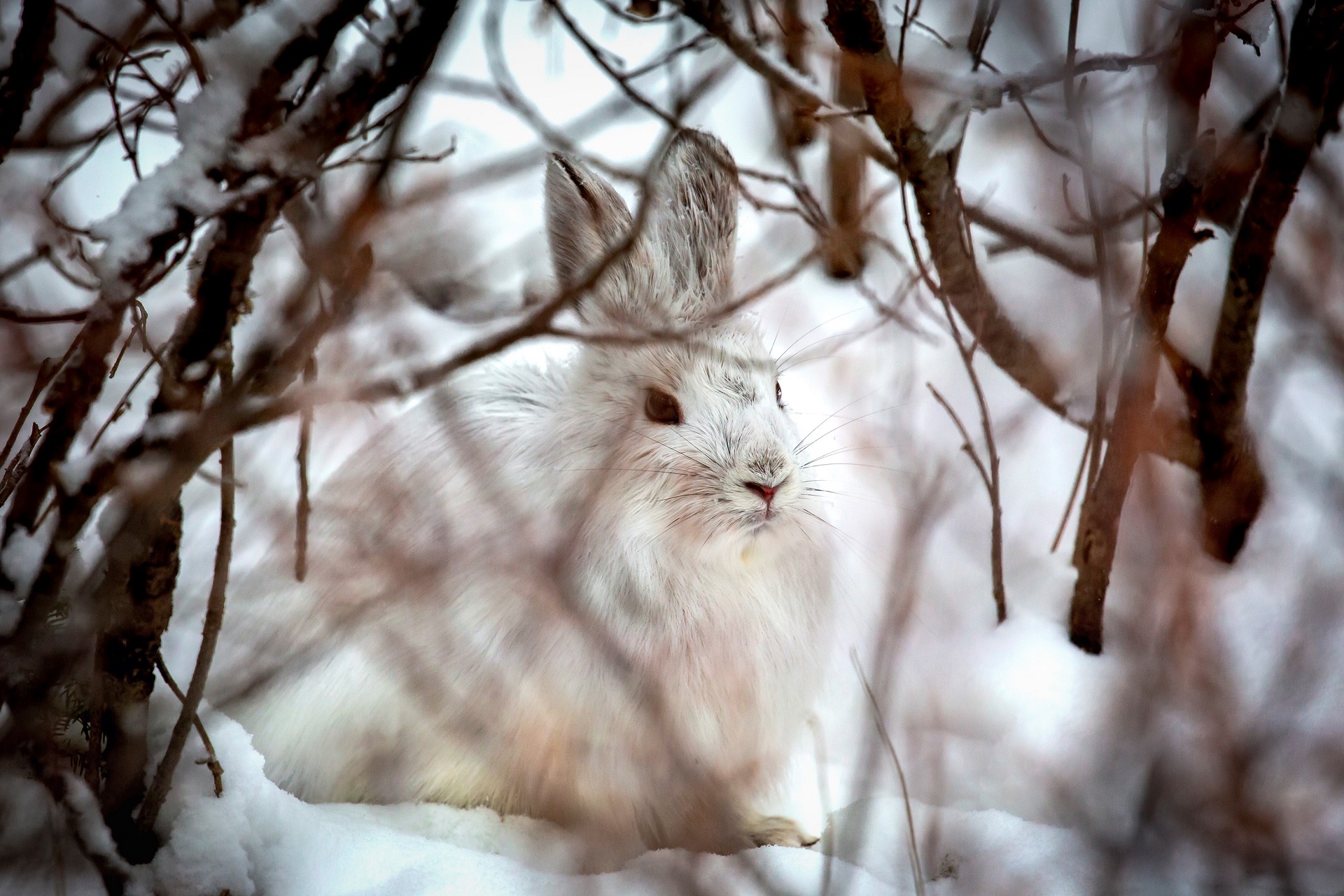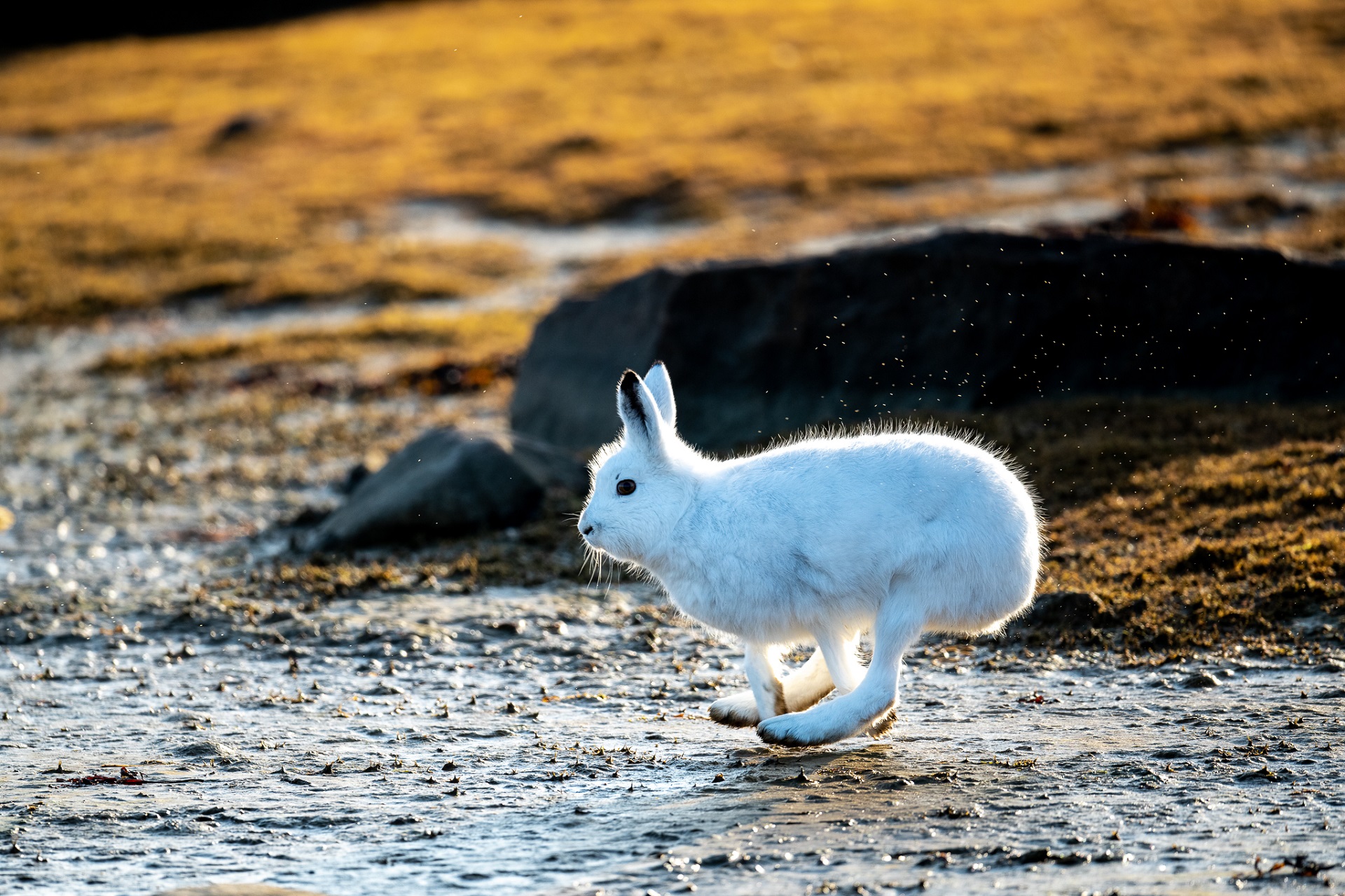Scientific name: Lepus arcticus
Average length/height: 48 – 68cm (19 – 28 inches)
Average weight: 3 – 7kg (6.6 – 15.4lbs)
Characteristics
Arctic hare have short tails, averaging three to eight centimeters in length and less body fat than most Arctic animals. It is an adaptation that lets them run 60 kilometers per hour (40 miles per hour) to help ensure their survival from predators. Their coat thickens and turns snow white in the winter and turns to a grey and brown coat in the summer, it also covers their feet to spread weight for walking on snow and for further insulation. Keen noses allow them to find food deep beneath the snow and their eyes give them nearly 360 degrees of vision (Canadian Geographic, 2019).
Territory/Geographical Locations
Typically, Arctic Hare are found above the northern tree line, in our case above the boreal forest. Spread out across Arctic Canada, they live on the tundra foraging on plants for food. There is the Mountain Hare found in Arctic Europe and Asia, that is so similar they may be the same species (Cool Antarctica, n.d.).
In the winter Arctic Hares can be found in larger groups, huddling together for warmth and using the buddy system to watch for predators. It has been recorded that in late winter in the northern islands they can gather in herds of more than 100, though this isn’t common. (Virtual Museum, n.d.)
Population & Reproduction
The Arctic Hare population is very healthy and not closely monitored. It is also unclear how long their lifespan is, though it’s suggested they live between three to five years in the wild, and one to one and a half in captivity (ADW, 2019).
Hares give birth to one or two litters per year. Baby hares are called leverets and there are usually five to six leverets in a litter. Males have multiple mates and create a mating territory. Gestation takes around 50 days and once born the mother leaves the young after about three days, only returning every 18 hours or so to nurse. This takes place for eight to nine weeks until they are fully weaned (Cool Antarctica, n.d.).
Arctic hare reach sexual maturity at the average age of 315 days.
Diet
Although there have been reports of scavenging meat when necessary, an Arctic hare’s diet is made up primarily of plant matter such as willow bushes, moss, berries, roots, lichen, seaweed and more. In the wintertime they dig through snow to find food sources. (ADW, 2019).










